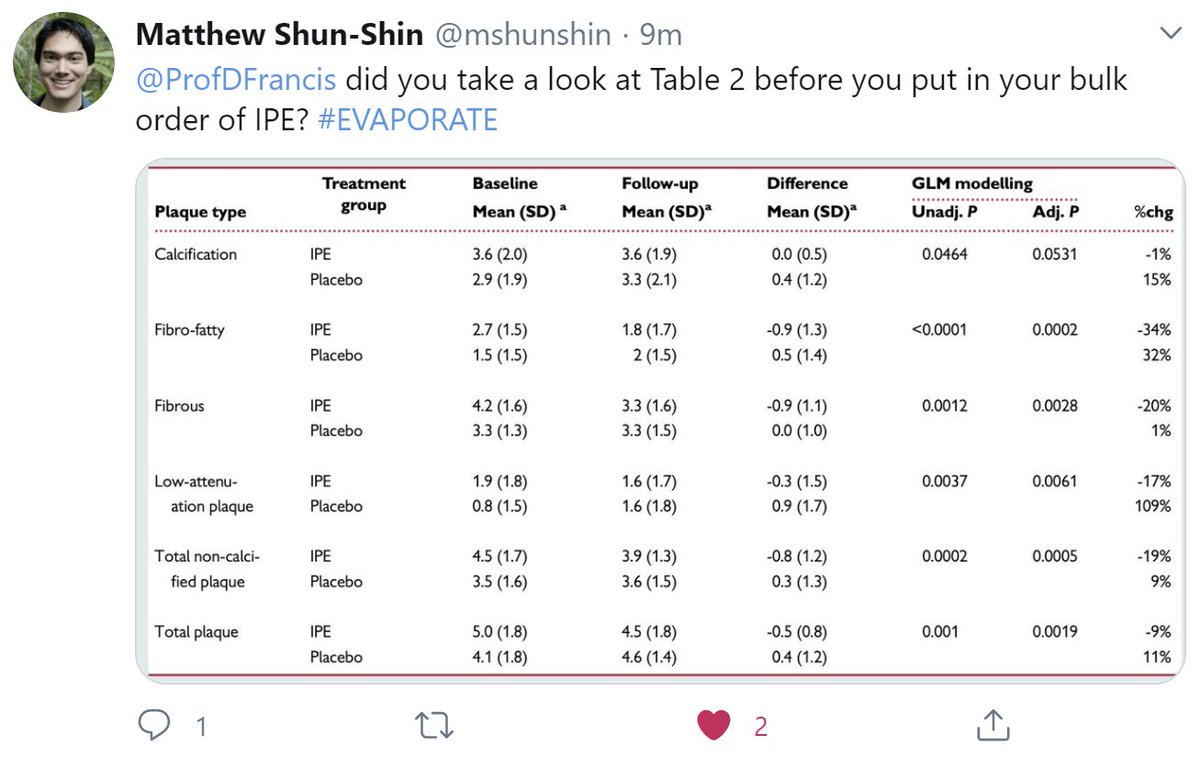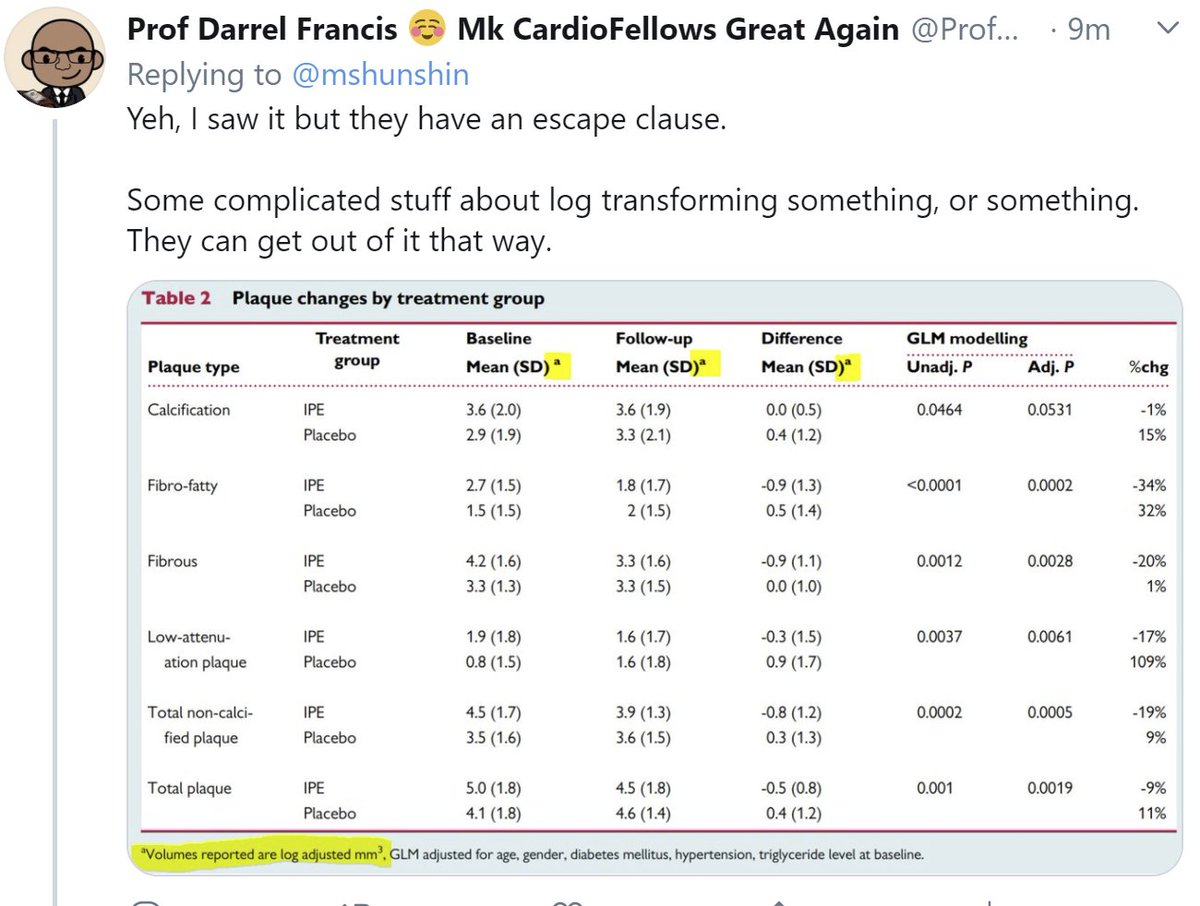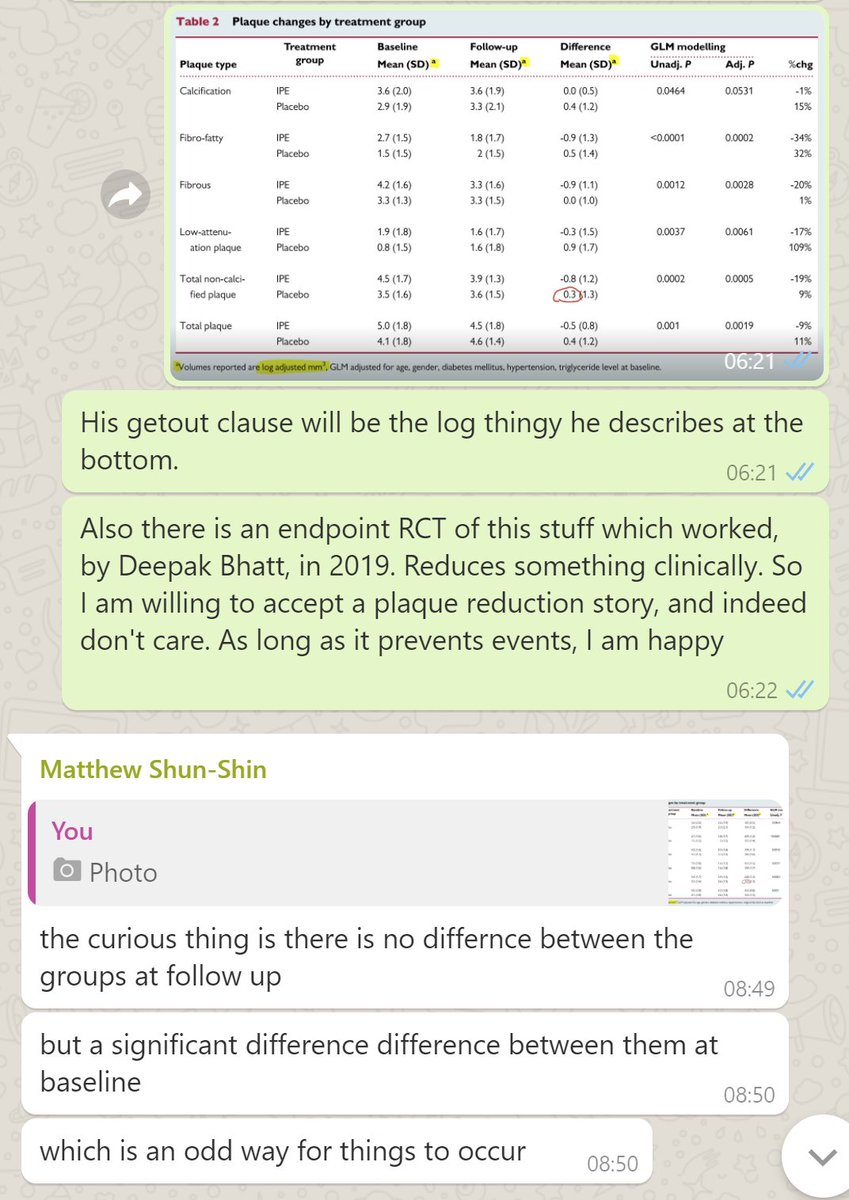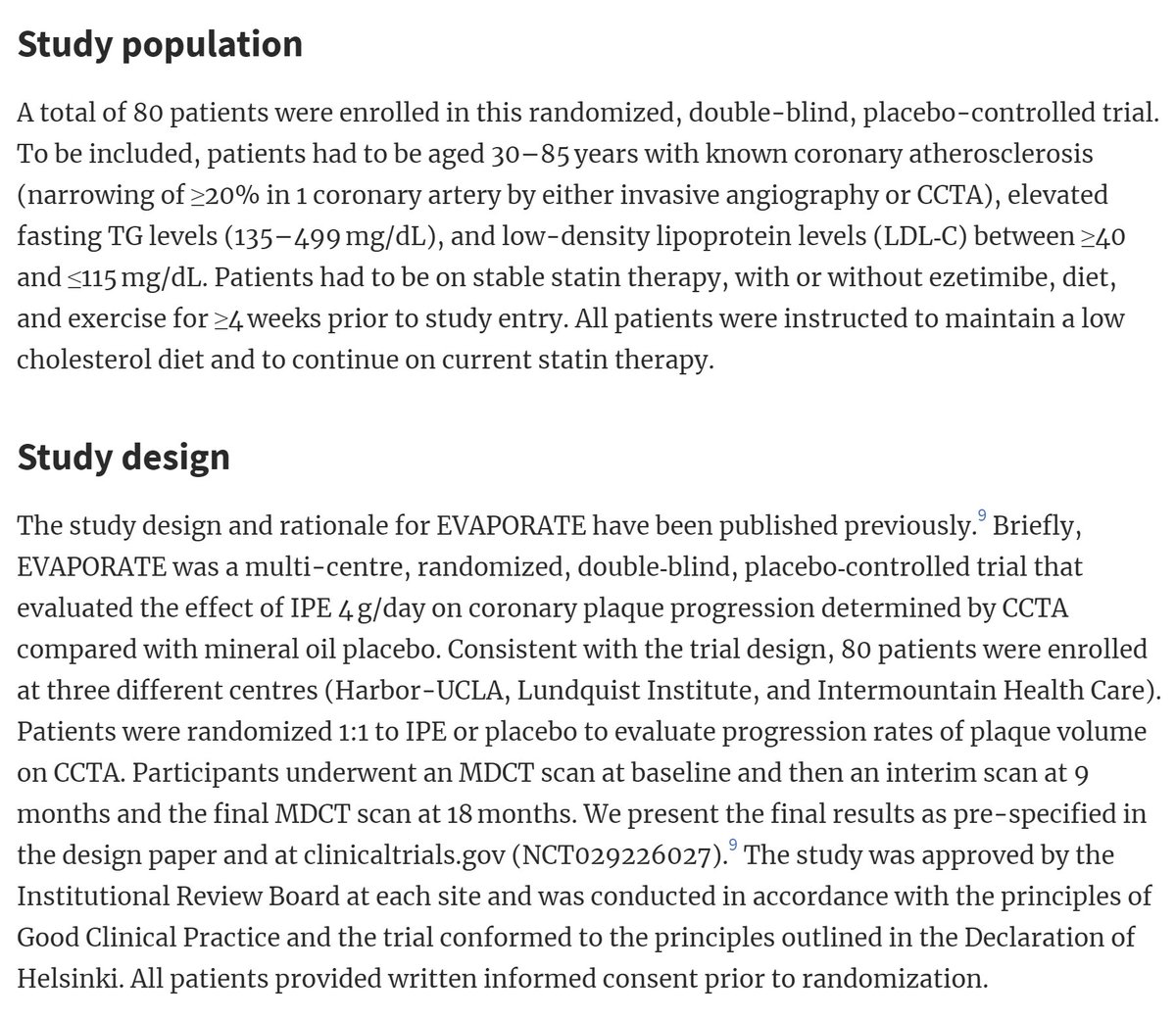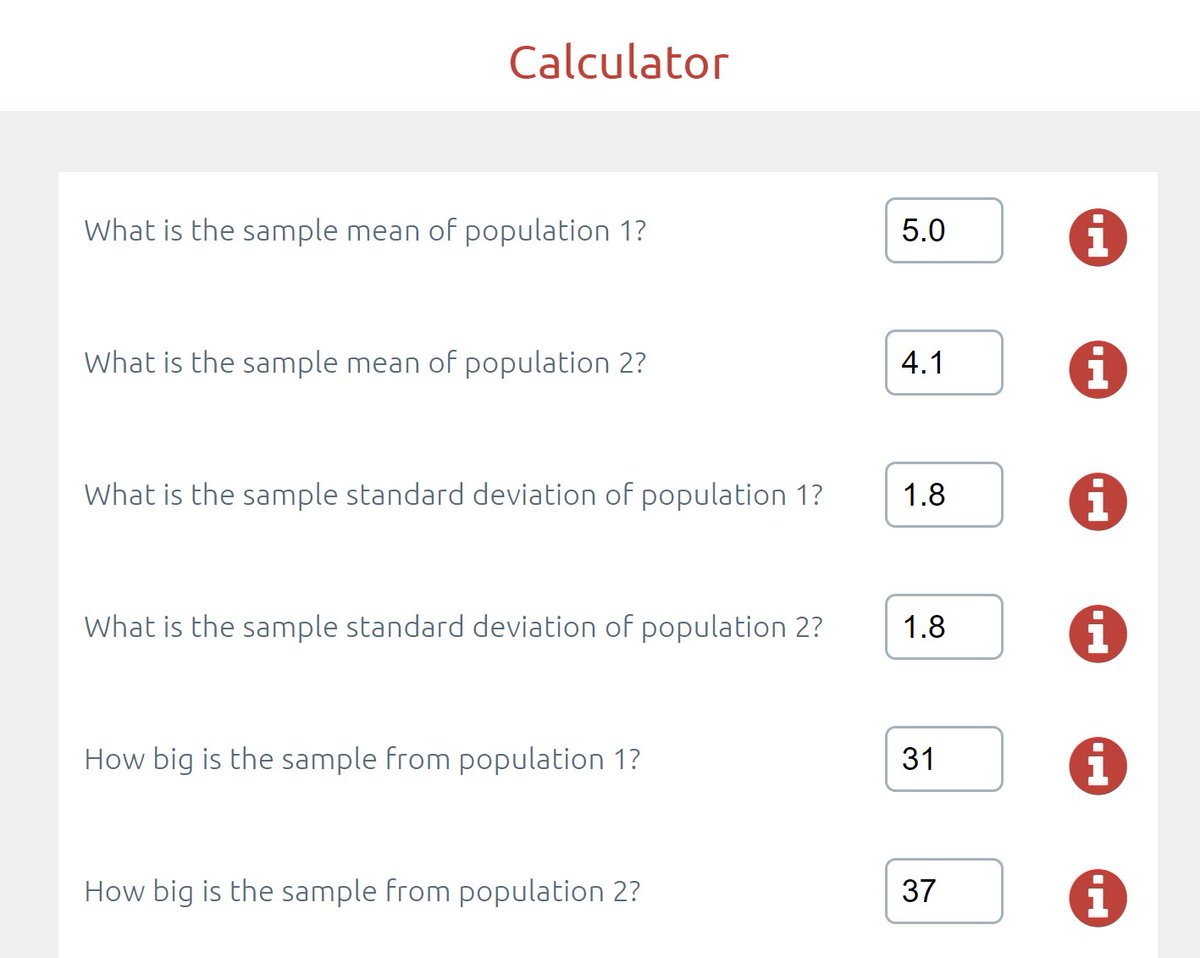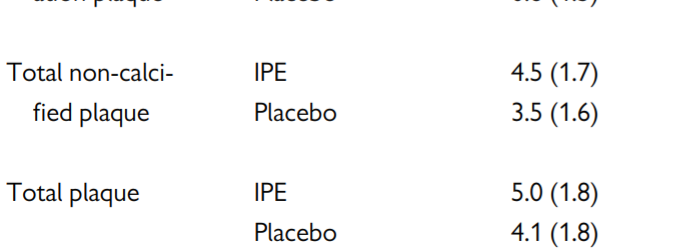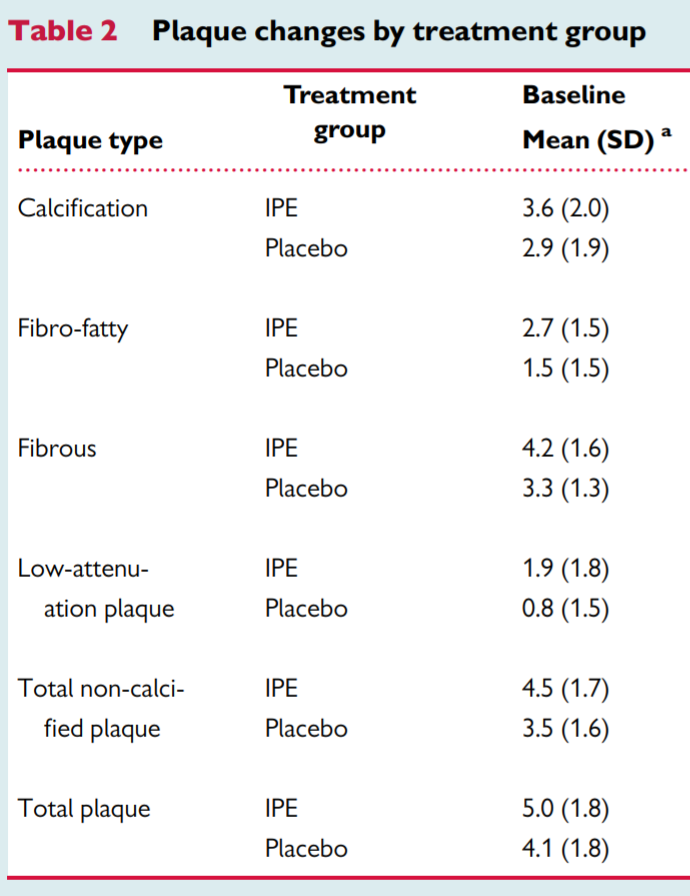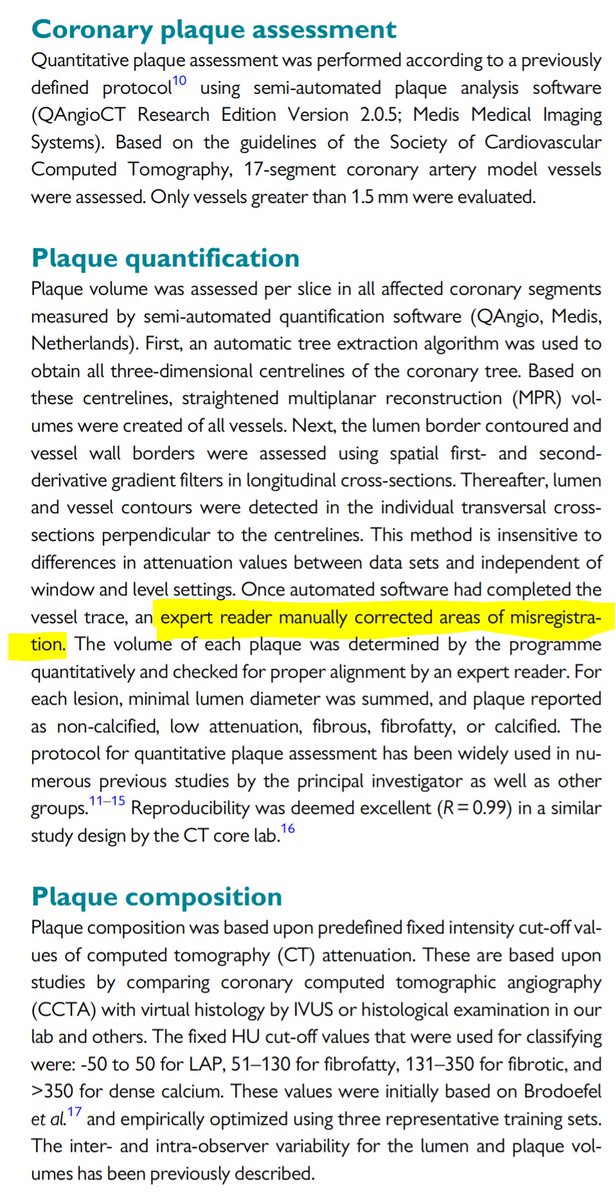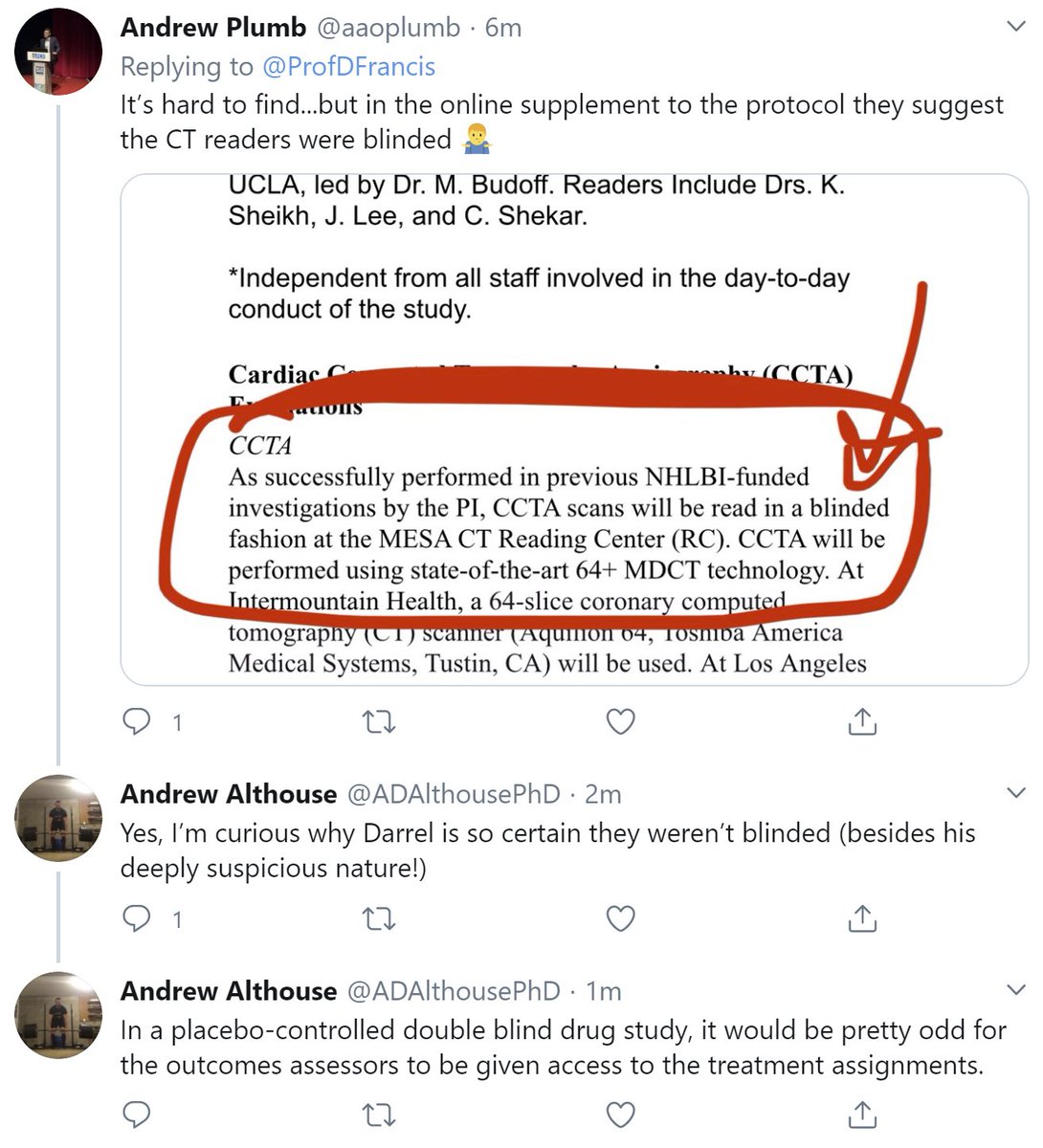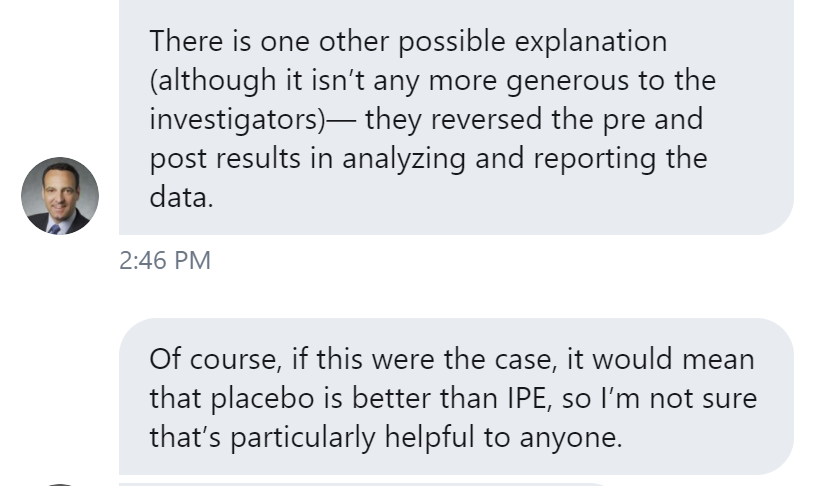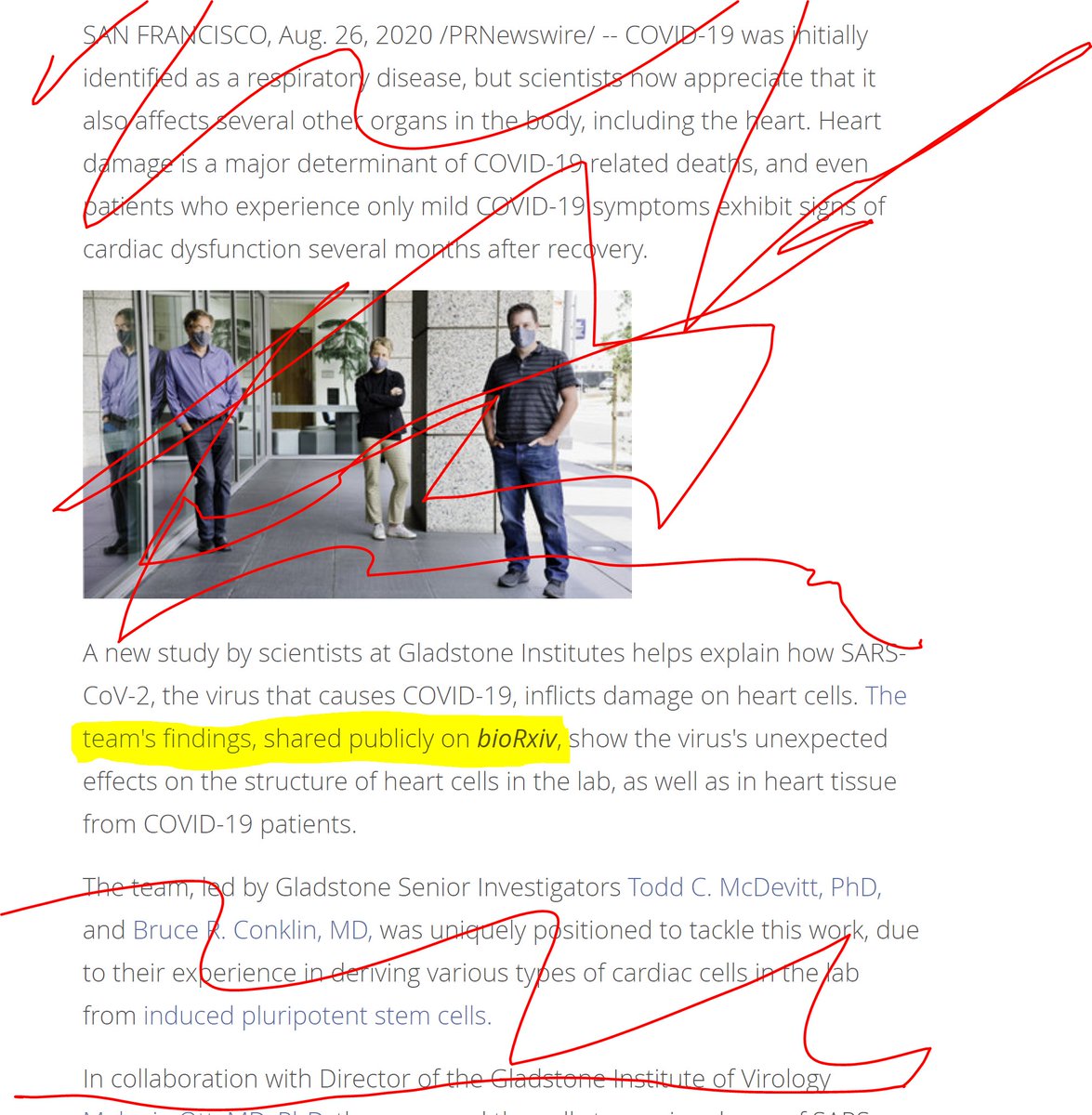My
God
I _had_ given up annoying people, forever.
But this one is such a facepalm. And there is now online evidence of me completely failing to debug a numbers thing.
#MedEd #Foamed #cardiotwitter
All blame goes to @mshunshin for my relapse.
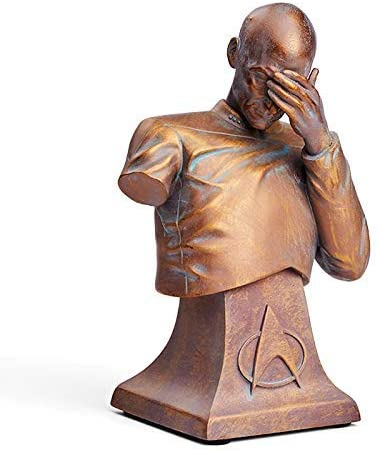
But then.
My whatsapp pinged.
You know how you do a trial, yeh?
At BASELINE, what are the two groups?
I know it is obvious.
But somehow I missed it. (Don't tell anyone.)
Here are the #EVAPORATE results, which I said to Matt was probably OK. (Me, the great skeptic.)

Go here and click the red "PDF" icon.
academic.oup.com/eurheartj/adva…
Next time I am had up for a beating by my university, I want you on the panel, as you will go lightly on me!

They are 0.9 apart.
So how many SD's apart?
(In reality they are each larger than this, so we are being generous.)
How much smaller is the SE than the SD,
TO AN ORDER OF MAGNITUDE
(Statisticians - I know this is the wrong SE, but it is a quick sense check only)
0.5 SDs
SE is about 1/5th of an SD.
THINK and get it right way round.
Will it be more or less SE's?
If you are 2 and a bit SE's away, ROUGHLY what is the p value?
Find any online unpaired t test calculator.
For example,
select-statistics.co.uk/calculators/tw…
How many SD's apart are the two means, at "randomization"?
The quicker you can do this in your head, the less effort it is, and the more willing you are to do it.
Most people don't realise they can do this.
Don't make blanket assumption! The top one has quite a wide SD, so is NOT at least 0.5 SDs apart.
All the others are.
Do you think the measurement was blinded?
If you think the measurement was blinded, you will believe anything, and I can't help you.
Do you take the effect sizes as unbiased estimates of the effect of the drug, therefore?
I am gonna put you down as reviewer for everything now.
8-)
Statisticians telling me there is no problem. I believe, howerever, that they are describing the statistical calculation process.
In contrast, I am using the statistics to test a different hypothesis.
Question is, were the 6 endpoint variables measured blinded or unblinded?
H0: Blinded
H1: Unblinded
So here goes my hypothesis test.
1. You KNOW you randomized
2. About 1 in 20 rows will be significant, through chance (unless you did fancy stuff to prevent it)
So it is a waste of time and shows unintelligence.
and you are concerned that your MEASUREMENT PROCESS was unintentionally biased,
that is a perfectly good comparison to make.
The Hypothesis 1 you are testing is that "I accidentally biased myself during measurement."
In fact, he might just have been appointed to Oxford University as Professor of Significance.
People had been whatsapping me with messages like "Mineral Oil is not neutral".
I answered "What do I care if it is acid, base, or neutral? Or democrat, republican, or independent?"
What they meant was:
It raises your nonHDL, by more than the active reduces it
It raises your CRP, by more than the active reduces it
Placebo means "I will please you".
No, it would definitely not please me to have that stuff done to me!
It would annoy the hell out of me.
So let's call it what it is.
noun. (Clinical Trials)
A thing you give the other arm,
that makes 'em worse.
Etymology: Latin - "I will irritate".
Shame. Was looking for a way to make myself healthier without having to go on a diet or do exercise etc.
Never mind.
Definitely cancelling my plans to smuggle this stuff in from USA.
Not after this miserable attempt to find anything good about HDL reduction, from Dan Keene.
bmj.com/content/349/bm…
Mixed up time points AND mixed up arms.
That would work!
Now they would start samey, and become differenty, and the new thing would be better!
DONE!
Can Francis Industries bill Amarin Inc, or will Cohen Corp be doing it?

